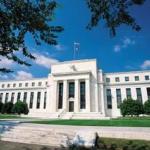 On Wednesday, following the two day Federal Open Market Committee meeting, Fed Chair Janet Yellen will likely announce that the Fed will do something they haven’t done in nearly a decade. They will raise the federal funds rate.
On Wednesday, following the two day Federal Open Market Committee meeting, Fed Chair Janet Yellen will likely announce that the Fed will do something they haven’t done in nearly a decade. They will raise the federal funds rate.
Obviously, a lot has happened since June 29, 2006. For example, on June 29, 2007, precisely one year after the Fed’s last rate increase, the first generation Apple iPhone was released. What this has to do with Fed, we really don’t know. But it does offer perspective on just how doggone long it has been since the world has known a rising federal funds rate.
As far as the economy goes, the last 10-years haven’t all been peaches and cream. Several notable disfigurements include the Great Recession, the ignoble disappearance of Lehman Brothers, TARP, trillion dollar budget deficits, the addition of over $3 trillion to the Fed’s balance sheet, seven years of zero interest rate policy, and the addition of over $10 trillion to the national debt.
Yet finally, after much dithering and prevarication, the navel gazers at the Fed have found the power within themselves to ever so slightly ease up on the gas pedal of monetary policy. Should one cheer? Should one boo? Should one care?
To be clear, a federal funds rate increase of 0.25 percent is hardly normalization. Monetary policy will still be operating with extreme intervention into credit markets and the economy. The Fed will still be provoking massive asset price distortions and dangerous market instabilities.
Operating a Thermostat
Certainly the Fed has to start increasing rates one way or another. A quarter percent increase is the logical launch place. But will the Fed obtain liftoff or will the ship of monetary policy flame out on the launch pad?
During the last rate increasing episode, Fed chair Alan Greenspan and later Ben Bernanke incrementally raised rates a quarter percent at a time, 16-consequitive times, over a two year period between June 30, 2004 and June 29, 2006. This brought the federal funds rate from 1 percent to 5.25 percent. If you recall, asset price distortions raged this entire time.
Irrational exuberance had been running wild in residential real estate for nearly two years when Greenspan began raising rates in mid-2004. For whatever reason, perhaps because he was obsessing over aggregate demand and inflation targets, Greenspan was slow to discern the housing price distortions his low interest rate policies had incited. Consequently, he was behind the curve in containing them.
Following the dot com bust, Greenspan panicked and pushed the federal funds rate to 1 percent. His objective was to pump liquidity into the market and re-inflate stock prices. Instead, the liquidity flowed into the housing market.
The whole time Greenspan thought he knew exactly what he was doing. For during the early days of the 21st century, monetary policy had been reduced to that of operating a heating and cooling thermostat. The underlying philosophy was generally very simple. When the economy cools down the Fed decreases rates to heat it back up. When the economy heats up the Fed increases rates to cool it off.
The Fed’s Stars Never Aligned
Unfortunately, the economy is much more complex than operating a thermostat. Interactions are nonlinear. Cause and effect play out in ways that could never be predicted or even imagined. So instead of moderating the business cycle, Fed policy often magnifies and distorts the ups and downs.
The Fed believes that by fixing the price of money artificially low, they’ll increase aggregate demand. The notion is that cheap credit compels individuals and businesses to borrow money and spend it. The increased consumption is supposed to produce increased profits, more jobs, rising wages, and economic growth.
Following the 2008 financial crisis the Bernanke Fed pulled out all the stops. In fact, they executed policies that just the thought of would have made Greenspan soil his pantaloons. They dropped the federal funds rate to near zero and held it there for seven years. They borrowed $3 trillion into existence. They sold short-term treasuries and twisted down long-term interest rates.
Yet, for all their efforts, the Fed scored a big fat goose egg for the economy. With each passing month, and with each passing year, they couldn’t fathom why in the world the recovery was so weak. They pushed and pulled and stimulated with everything they had to get their graphs to show 5 percent unemployment, 2 percent inflation, and consistent 3 percent gross domestic product. In the end, they never quite got there.
Presently, Yellen finds herself in quite a pickle. The unemployment rate is low. But so is the labor participation rate. Economic growth is weak. Trade has slowed.
Moreover, while Yellen was waiting for the economic stars to align her opportunity to raise rates came and went. Now the weak recovery appears to be rolling over and the federal funds rate is still near zero.
Nonetheless, because Yellen’s been promising the Fed would raise rates for a year or more, she must follow through…even though she knows she shouldn’t. Just wait for the FOMC statement and press conference utterances. They should be nothing less than delightful.
Sincerely,
MN Gordon
for Economic Prism




